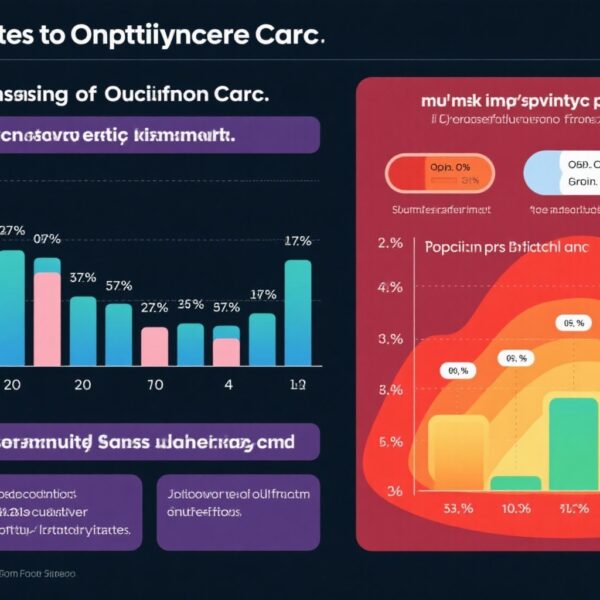Highlights
– In a retrospective cohort of 911 critically ill patients receiving regional citrate anticoagulation during continuous kidney replacement therapy (CKRT), citrate accumulation occurred in 159 patients (17%).
– Pre-CKRT arterial lactate outperformed the vasoactive inotropic score (VIS) in predicting citrate accumulation; each one-unit increase in log-transformed lactate raised odds by 2.34 (95% CI 1.94–2.85).
– Citrate accumulation was associated with markers of liver dysfunction but not with circulatory shock, and after multivariable adjustment it was not independently associated with mortality.
Background
Regional citrate anticoagulation (RCA) is widely recommended for continuous kidney replacement therapy (CKRT) because it reduces bleeding risk relative to systemic anticoagulation and extends filter life. However, citrate is metabolized predominantly in the liver, skeletal muscle, and kidney; impaired metabolism or delivery can cause systemic citrate accumulation, leading to hypocalcemia, a rising total calcium to ionized calcium ratio, metabolic alkalosis or acidosis, and other metabolic derangements. The traditional concern has been that patients with liver dysfunction or severe shock might be at higher risk of citrate accumulation, prompting debate over the safety of RCA in these populations and uncertainty about which bedside variables reliably predict accumulation.
Study design
Müller et al. performed a retrospective cohort analysis including critically ill patients treated with RCA-based CKRT between January 2018 and March 2022. The study included 911 patients. Citrate accumulation was defined using an albumin-corrected total calcium to ionized calcium ratio (CaT/Cai) ≥ 2.5, a commonly used surrogate when direct citrate measurements are unavailable.
Key predictors evaluated were arterial lactate measured before CKRT initiation, the vasoactive inotropic score (VIS) as a surrogate for vasopressor/inotropic support, and parameters indicating organ dysfunction, with particular focus on liver function and circulatory shock. Regression modeling assessed associations between predictors and citrate accumulation and between accumulation and mortality. Discriminative performance of lactate and VIS was compared.
Key findings
Incidence and severity
Of 911 patients who received RCA-based CKRT, 159 (17%) met criteria for citrate accumulation (albumin-corrected CaT/Cai ≥ 2.5). The authors provide severity gradations and temporal patterns in supplementary materials (see original article), but the headline rate highlights that accumulation is not rare in a broad critically ill CKRT population.
Predictors: lactate versus VIS, and the role of liver injury
Lactate measured prior to CKRT initiation showed the best discrimination for subsequent citrate accumulation compared with VIS. On multivariable analysis, the odds ratio (OR) for citrate accumulation was 2.34 (95% CI 1.94–2.85, p < 0.001) for each one-unit increase in lactate on the logarithmic (log mmol/L) scale. The study provided illustrative predicted probabilities: a lactate of 0.3 mmol/L corresponded to a 3.3% (95% CI 2.06–5.28) probability of accumulation, whereas a lactate of 25 mmol/L corresponded to a 59.8% (95% CI 48.88–69.78) probability.
Measures related to liver dysfunction (biochemical indices and clinical markers) were associated with citrate accumulation, consistent with physiology: impaired hepatic clearance reduces citrate metabolism. In contrast, the presence or severity of circulatory shock per se did not independently predict accumulation once other factors were accounted for.
Clinical outcomes
Although citrate accumulation is potentially hazardous, the study found that after multivariable adjustment accumulation was not independently associated with increased mortality. This suggests either that accumulation can often be detected and managed, that accumulation may be a marker of illness severity rather than a direct mediator of death, or both. The authors emphasize that careful monitoring and prompt protocolized management are crucial.
Comparative performance and practical thresholds
Pre-CKRT lactate had better discriminative performance than VIS in predicting accumulation. The quantitative relationship between lactate and predicted probability permits clinicians to estimate risk across a broad range of lactate values. While exact operational thresholds will vary by center and protocols, the data indicate that markedly elevated lactate (e.g., many mmol/L) identifies patients at high risk.
Expert commentary and interpretation
These findings have clear physiologic plausibility. Citrate is metabolized in the tricarboxylic acid cycle; hepatic dysfunction or inadequate tissue perfusion (manifested by elevated lactate) reduces citrate clearance and increases the risk of systemic accumulation. Lactate, therefore, functions as an integrated marker of impaired cellular oxidative metabolism and diminished ability to clear citrate, and this study supports its use as a practical bedside predictor.
Important clinical implications include:
- Pre-CKRT lactate should be measured and considered when selecting anticoagulation strategy. Very high lactate suggests a substantially increased risk of citrate accumulation and should prompt heightened monitoring or consideration of alternatives.
- Routine monitoring of ionized calcium, total calcium, and the CaT/Cai ratio is essential when using RCA; many units use a protocolized approach with frequent ionized calcium checks early after initiation and after rate changes.
- VIS (vasopressor load) alone is an imperfect surrogate for citrate clearance, likely because vasopressor dose does not directly equate to the degree of tissue hypoxia or hepatic metabolic capacity.
These data should not be interpreted as contraindicating RCA in all patients with high lactate or liver disease. The study found accumulation in 17% overall, and after adjustment no excess mortality attributable directly to accumulation. Instead, the work supports individualized risk assessment and more intensive monitoring when baseline lactate is elevated or when objective liver dysfunction is present.
Limitations
- Retrospective design: the study is observational and subject to confounding and selection bias. Choice and dosing of anticoagulation and CKRT parameters may have varied across patients and time.
- Surrogate endpoint: citrate accumulation was inferred from an albumin-corrected CaT/Cai ratio ≥ 2.5 rather than by direct plasma citrate measurements. The ratio is widely used clinically but is an indirect marker and may be influenced by factors such as hypoalbuminemia or calcium shifts unrelated to citrate.
- Potential center-specific protocols: results may reflect institutional citrate and CKRT protocols and thus require external validation in other settings with different citrate solutions and flow strategies.
- Residual confounding: although multivariable adjustment was performed, unmeasured factors (e.g., rates of transfusion, variable muscle mass, or timing of sampling) could affect the associations observed.
Clinical takeaways
– Measure arterial lactate before initiating RCA-CKRT. Elevated lactate confers a quantitatively greater risk of citrate accumulation; consider this when choosing anticoagulation.
– Use protocolized monitoring for ionized calcium and total calcium with rapid response algorithms for hypocalcemia or rising CaT/Cai ratio. Early detection and adjustment (reducing citrate dose, increasing calcium replacement, or switching anticoagulation modality) allow safe continuation of CKRT in many cases.
– Do not equate vasopressor dose with citrate safety: VIS alone was less predictive than lactate. Consider a composite assessment including lactate and liver function tests.
– Reserve RCA judiciously in patients with severe hepatic failure or extremely high lactate if local resources for rapid monitoring and protocolized response are limited; otherwise, personalized use with close surveillance is supported.
Research and practice gaps
This study suggests a simple, widely available biomarker (lactate) can stratify risk for citrate accumulation. Next steps should include external validation in prospectively collected cohorts, incorporation of lactate into bedside predictive algorithms (potentially combined with liver function indices and hemodynamic variables), and randomized or stepped-wedge trials comparing tailored anticoagulation strategies guided by such algorithms versus standard care. Direct citrate measurement studies would clarify the relationship between biochemical accumulation and clinical outcomes.
Funding and clinicaltrials.gov
Funding and trial registration details are provided in the original article: Müller MM et al., Crit Care. 2025. Refer to the published paper for study-specific disclosures.
References
1. Müller MM, Weber A, Bartussek J, et al. Incidence, severity, and predictors of citrate accumulation during continuous kidney replacement therapy in the critically ill. Crit Care. 2025 Nov 3;29(1):468. doi: 10.1186/s13054-025-05691-2. PubMed PMID: 41184940; PMCID: PMC12581596.
2. Kidney Disease: Improving Global Outcomes (KDIGO) Acute Kidney Injury Work Group. KDIGO Clinical Practice Guideline for Acute Kidney Injury. Kidney Int Suppl. 2012;2:1–138.
3. Gaies MG, Gurney JG, Yen AH, et al. Vasoactive-inotropic score as a predictor of morbidity and mortality in infants after cardiopulmonary bypass. Pediatr Crit Care Med. 2010;11(2):234–238.
4. For practical guidance on RCA protocols and monitoring, readers may consult contemporary reviews and institutional protocols; key prior reviews include clinical summaries by experts in citrate anticoagulation (see Oudemans-van Straaten and colleagues and other authoritative reviews).
Note: This article summarizes and interprets data from Müller et al. (2025). Clinicians should consult the original publication and local protocols before changing practice.



